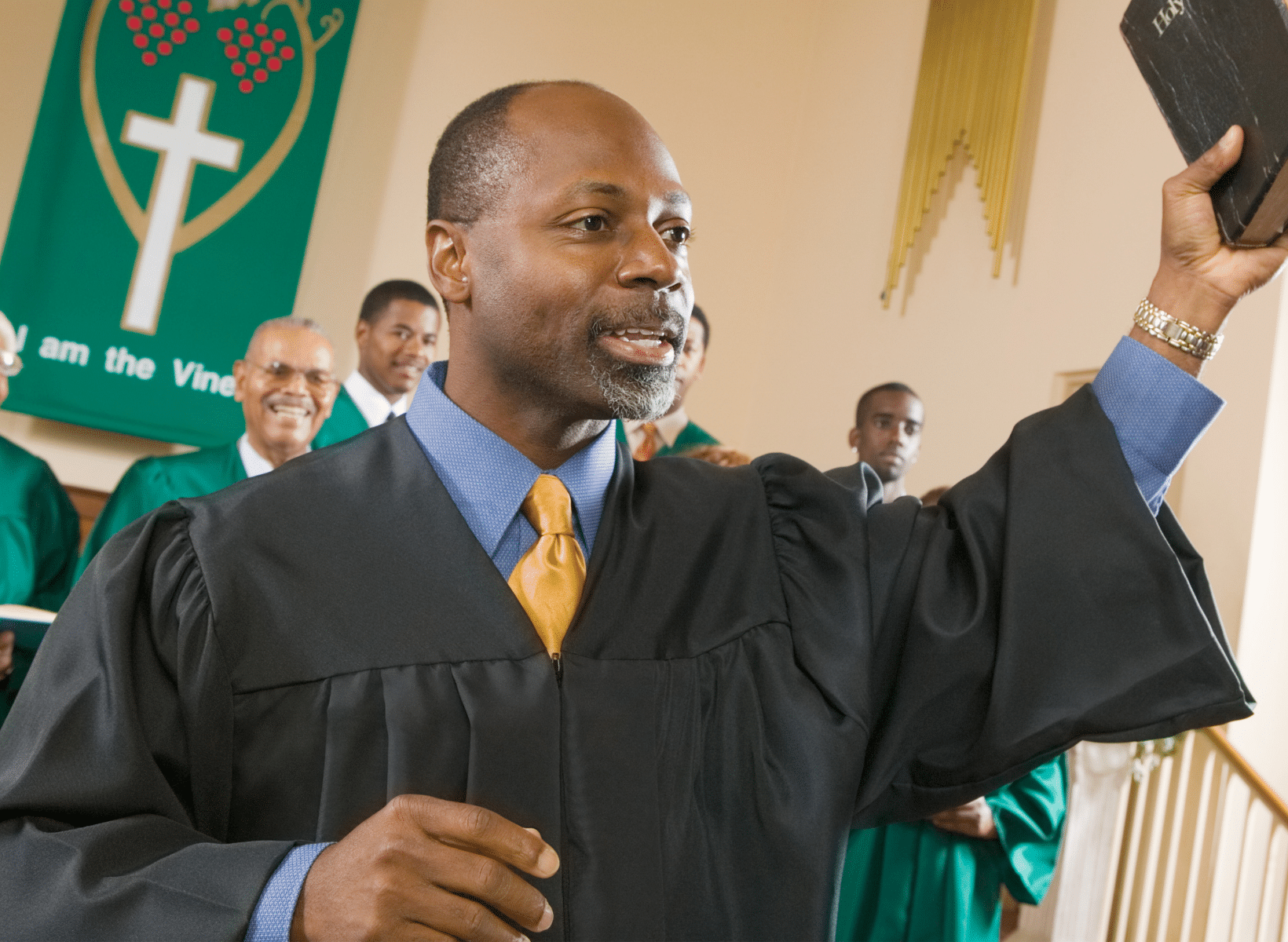By Brittiny Moore
Whether at a small church, or one that seats thousands, Black funerals – or homegoing celebrations – are expressions of mourning that honor Black life, love, and community. Homegoing celebrations are a fixture in Black communities, and elaborate and festive rituals that blend African ancestry with the Christian religion.
During the antebellum period, enslaved Africans were prohibited from performing funerals and traditional rituals, for fear that they would conspire to rebel. At the same time, enslaved Africans were responsible for preparing the body and funeral services for the deceased plantation owner’s family, according to Christian funeral traditions.
This disallowance led enslaved people to perform funeral ceremonies in “hush harbors” — hidden, sacred places where enslaved Africans could freely perform funeral rituals that fused African traditions with those of Christianity.
Today, homegoings continue to offer an environment where raw forms of Black culture can be freely exercised — through the singing of gospels and spirituals, the reading of scriptures, the adornment of T-shirts honoring the deceased, the final farewells at the close of the casket, and a feast, known as a repast, shared among the bereaved.
Although Black folks in the United States are diverse in their religious beliefs, socioeconomic status, geographic regions, and family traditions, when it comes to a homegoing service, many traditions remain consistent. These traditional practices stem from, and are deeply rooted in, African ancestry brought to America by the African people who survived the middle passage of the Atlantic slave trade.
These are five African funeral traditions reflected in homegoings today:
1. Homegoings are a community-wide affair.
Homegoing celebrations are often quite large, with family members, close friends, and even acquaintances coming from far and wide to attend services. Even distant or feuding family members are expected to put up a temporary truce to attend the homegoing and honor the life of a lost loved one. Many Black families hold services on Saturdays to allow as many people as possible to attend. In some cases, the service may be postponed to ensure everyone can be there.
The Black community historically, and still today, uses funerals to come together, show support for the bereft, share in each other’s pain, relish in the culture of their Blackness, and maintain connection to older African traditions.
It is typical for a death in Africa to bring the whole community — family, friends, fellow church goers, and strangers alike — together to participate in the entire funeral process, from pre-burial ceremonies to after-funeral bereavement rituals. When a death is announced, the community at-large flocks to the bereaved family to provide holistic support to help them navigate their grief and life without their loved one.
The community aids the grieving family with their basic needs — cooking and baking, assisting with buying groceries, and other errands — providing the grieving family space to mourn. A tent is raised on the homestead of the grieving family, and here the community gathers for prayer and grief circles in the days preceding the funeral. This is a period when the community surrounds the bereaved family with love, patience, and support, and this may include various traditions and social and religious practices.
2. Home goings include a “right burial” for the deceased.
As the name implies, a homegoing is the symbolic return of the human spirit back to its heavenly home. Therefore, it’s crucial for Black families to ensure their loved ones are able to have as smooth a transition to the afterlife as possible.
Homegoing are deliberately and meticulously elaborate celebrations of the deceased’s life, including music, dancing, flashy hats, and ornate decorations. It’s typical to find flower-filled altars as backdrops for an elegantly casketed loved one, oversized T-shirts honouring the deceased, slideshows celebrating the life of the deceased, and the placement of personal belongings on or in the casket.
These traditions are rooted in the African belief that death is a continuum of existence, rather than an end. African communities participate in several traditions and rituals to ensure the “right burial” is available to their ancestors, which is said to prevent the spirit of the deceased from haunting or exerting power over the living.
These rituals begin by preparing the homestead of the bereaved family, including turning all pictures of their loved one to face the wall and smearing ashes on the windows to prevent the deceased from viewing themselves as their body is cleansed and prepared for burial. This is followed by body-removing rituals, so as to confuse the dead, who may want to find their way back to their body. These rituals include taking the body through a hole in the wall, removing the body feet-first, and taking a zig-zag path to the burial site. During burial, the deceased is dressed and buried with personal items to take with them in the afterlife.
3. A posh coffin is a hallmark of a Homegoing ritual.
Most families spare no expense for a homegoing service, commonly opting for an upscale casket for their loved one. The casket is the aspect of a homegoing where families will go all out, many deciding to spend a sizable sum of money, if possible.
Despite the hefty price tag of most funeral services, the overall cost of a homegoing is not often viewed negatively. Rather, many Black families are happy to indulge in traditions and ceremonies for a collective celebration in memory of a lost, loved family member.
African funeral ceremonies are akin to homegoing’s, in that extravagance is imperative to a “right” burial — so much so, that one business in Ghana has made something quite remarkable out of it. The group is affectionately known as “fantasy” coffin makers, crafting caskets in the shapes of animals, cars, airplanes, locomotives, and much more.
These fantasy coffins are designed to reflect the hobbies, and even jobs of the deceased, allowing loved ones to be buried in a casket that represents their passions and livelihoods. This allows surviving loved ones an even stronger connection to the personality and legacy of the deceased.
4. Homegoing’s include a ring shout to bind the grieving and support the deceased in their transition.
Upon arrival, homegoing guests are met by the church choir as they sing hymns about God, hope, and the healing strength of the Lord. The hymns and gospels, accompanied by the organ and a cadence of drums, echo through church halls, filling the guests with spirit and moving them through song. Guests sing, clap, raise their hands in praise and prayer, and even dance.
Music plays an integral part in setting the tone for a homegoing and provides those in attendance the space to freely express their emotions. Music has the power to unify mourners and allow those in attendance to offer a choral embrace to the family suffering a loss.
In African countries, this song and dance is prominent at burial ceremonies in the form of the ring shout — a conjure-rooted practice characterized by dancing in a circle, chorus singing, hand clapping, and percussion. Moving together in a circle keeps mourners in close rhythmic connection and offers the same choral embrace heard at homegoing’s.
Used by many enslaved communities in the antebellum south, the ring shout was considered a sacred dance and song, often in the form of a call-and-response that allowed Black folks to express themselves in safety and brought joy in the face of grief to those who participated. The ring shout is believed to allow folks to embody intimacy with their ancestors. It’s seen as a ritual with the power to open a portal for collective mourning and celebration.
5. Homegoing’s conclude with a repast to nourish the grieving and celebrate life.
After the homegoing service and burial of a loved one, family and friends gather once again to find joy in the act of breaking bread and celebrating Black life at the repast — an occasion that focuses on food and fellowship and signifies the intimately intersected feelings of melancholy and life anew without the physical presence of their loved one. Traditionally, the food is prepared by the home church as a gift to the bereaved. By sharing a meal with loved ones and friends, the bereft are given space to be vulnerable in their grief.
The repast offers a mourning community nourishment and space to repair the mind, body, and soul while immersed in an atmosphere of love and support. During the repast, there’s often a purposeful shift in mood and a shift to celebration, sometimes even a party.
A post-funeral meal is also customary in African funeral traditions. After a funeral, the whole community is invited to break bread at the deceased’s home.
A cleansing ritual is typically practiced before entering the home for the feast. Everyone must wash the dust and other remnants of the graveyard off of themselves at the gate of the house.
Some traditions include cutting pieces of aloe to be placed in the cleansing water, with the belief that it can remove bad luck. Often, community churches are involved in this ritual, using sprinkles of holy water to cleanse guests of their impurities. This cleansing helps ensure that the spirit of the deceased can pass on to their next life.
Death has historically marked the African American experience, from the deadly voyages of the Middle Passage to the violence of enslavement, and persists today at an alarming rate – Black Americans are three times as likely as white Americans to have two or more family members die by the time they reach the age of 30.
However, even in the face of great loss and cultural separation death, enslaved Africans and their descendants preserved sacred ancestral practices and infused them with new traditions. Today, homegoing provide the same refuge as the slave ceremonies once did, and allow emotions to be on full display – ranging from an outpouring of joy to the outcry of sorrow.
Homegoing’s offer Black communities the warm embrace in death, and provide Black families the love, support, and joy they need after suffering the loss of a loved one.
Resource:
Homegoings, a film by Christine Turner

